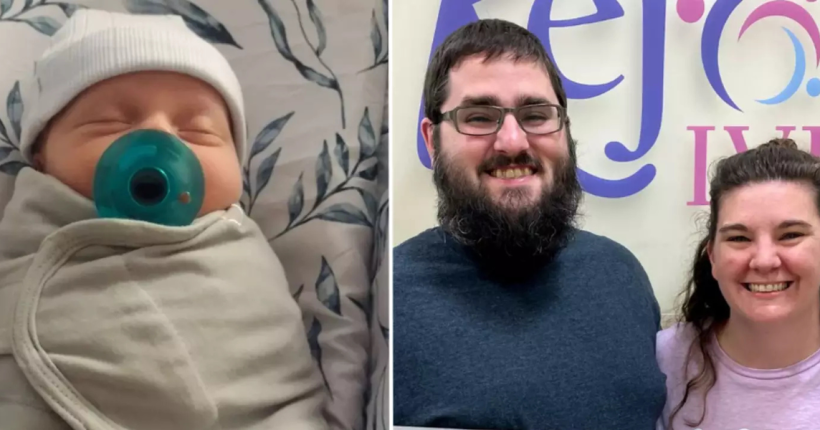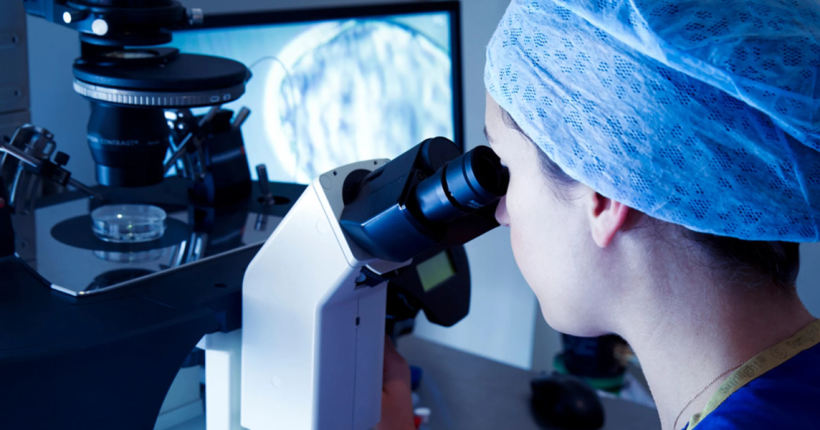In a sun-soaked clinic in Guadalajara, Mexico, a cry echoed through the room—not just the birth of a baby, but the dawn of a revolution. This wasn’t any ordinary birth. It was history in motion: the world’s first baby conceived entirely through a fully automated, AI-assisted IVF system.
Welcome to the future. Where biology, robotics, and artificial intelligence blend together—not in theory, not in sci-fi, but in the most human experience of all: the creation of life.
A World First: Life Created Across 3,700 Kilometers
On the surface, the story sounds like science fiction. But it’s now an extraordinary scientific fact.
In a global-first medical breakthrough, fertility experts in New York remotely controlled a robotic system to perform an intricate ICSI (Intra-Cytoplasmic Sperm Injection) procedure on an egg located over 3,700 kilometers away in Guadalajara, Mexico.
Using a digital console, specialists manipulated micro-manipulators through a high-speed internet connection, while AI and robotics executed 23 critical steps of the ICSI process autonomously.
There was no embryologist physically present at the lab.
There was no microscope directly looked through by human eyes.
There was no hand performing the delicate sperm injection.
Instead, life was kindled by a new alliance of humans and machines, where code, algorithms, and microcontrollers replaced scalpels and gloves.
Understanding the Tech: What Really Happened?
Let’s break this down.
ICSI is one of the most complex, skilled procedures in assisted reproduction. In a conventional setting, an embryologist manually uses microscopic tools to inject a single sperm directly into the cytoplasm of an egg—requiring immense training, hand-eye coordination, and surgical finesse.
But in this case:
- A robotic micromanipulator system was programmed to carry out the injection.
- AI software governed the motion and alignment of the tools with millimetric accuracy.
- Specialists in New York remotely supervised and made high-level decisions.
- The entire procedure was executed and monitored through a live video interface, with AI reducing latency-related errors and guiding robotic arms in real time.
The entire fertilization event took place without a single human hand entering the lab.
And the result? Fertilization. Embryo formation. Pregnancy. Birth.
Why This Birth is Making Global Headlines
1. A Leap for Medical Autonomy
This isn’t just about one birth. It’s a proof of concept that artificial intelligence can take over one of the most sensitive medical procedures ever developed. That alone is monumental.
2. Access to Fertility for All
Fertility treatment has traditionally been urban, expensive, and limited to highly specialized clinics. With remote-controlled systems and AI precision, clinics in rural and underserved regions could soon access world-class embryologists from afar—no matter their geography.
This could unlock access to fertility care for millions of couples worldwide who’ve previously been excluded.
3. Reliability and Error Reduction
Human embryologists, though highly trained, are still susceptible to fatigue, stress, and variability. A robotic system doesn’t shake. It doesn’t tire. It doesn’t forget. That means more consistent outcomes, fewer failed cycles, and potentially higher success rates.
Behind the Scenes: The Science Powering the Birth
The system used wasn’t your average robotic arm—it was an advanced, medically calibrated ICSI platform enhanced by AI algorithms trained on thousands of embryology procedures.
Key Features:
- 23-step fully automated ICSI workflow
- Computer-vision-based alignment and cell targeting
- Latency-mitigation software to ensure zero delay between input and action
- Remote access portal with biometric encryption
- Built-in fail-safes for sperm immobilization, egg membrane penetration, and post-injection handling
What once required an entire team of experts and high-pressure microscopes (what’s high-pressure microscopes) is now being distilled into precision-engineered AI models that never blink.
Expert Opinions (as per RBMO publication)
The original authors of the case report emphasize the transformative potential of this technology. In their words:
“This automated system may provide solutions for regions lacking expert embryologists, reduce fatigue-related human errors, and increase global access to high-quality ART procedures.”
“Although this case was performed over 200 km, the successful birth from a similar AI-guided process conducted over 3,700 km underscores the long-range viability of the system.”
They also highlight the need for larger studies to confirm success across broader populations and under varying conditions.
Journal Citation:
Tekin I, Ertem A, Cinar PK, Atabekoglu CS, Bozkurt DS, Ozcan EA, Erdemoglu E, Attar E. A digitally controlled, remotely operated ICSI system: Case report of a single human oocyte injected from 200 km away. Reprod Biomed Online. 2025.
Read the Full Journal Article on RBMO
Ready to Step Into the Future of IVF?
Join the next generation of fertility specialists—learn from the breakthrough that changed the world.
As this historic case proves, AI and remote systems are redefining the fertility landscape—and skilled professionals who understand these technologies will lead the way forward.
Whether you are a medical student, embryologist, lab technician, or clinician, this is your moment to grow, adapt, and master the art and science of assisted reproduction.
Enroll in Our Certified Online IVF Course:
- 📘 Comprehensive modules covering ICSI, IVF, embryo culture, cryopreservation, and now AI-assisted fertility techniques
- 🧪 Hands-on simulation training and live mentorship from industry experts
- 🌍 100% online and self-paced—perfect for professionals worldwide
- 🏅 Globally recognized certification for career enhancement in embryology & ART
Contact us at info@thefertilisacademy.com Or
Call us at +91 94539 70123 | +91 96673 48050





